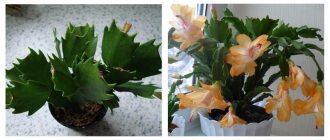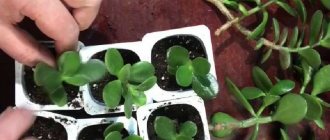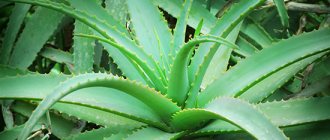12/30/2018 Irina Malinina 2 comments
Many novice gardeners are convinced that a cactus is a prickly “pet” that loves the sun and is afraid of excess moisture. But the beautiful Decembrist flower is able to destroy these established ideas and prejudices.
Where did this strange name come from? How difficult is it to achieve flowering? How should a popular plant be cared for? What superstitions accompany its cultivation? Our article will tell you about all this and much more.
Planting and caring for the Decembrist
- Flowering: in winter, December-January.
- Lighting: bright diffused light or light partial shade (eastern or western windows, the southern window should be shaded in the afternoon).
- Temperature: possible range from 18 to 40 ˚C, but in summer the plant is comfortable at 18-22 ˚C, in winter – at 14-16 ˚C.
- Watering: moderate, after drying the substrate to a depth of 1-3 cm.
- Humidity: high. Regular spraying is recommended up to several times a week in summer and 1-2 times a month in winter.
- Feeding: from March to September once every two weeks with complex mineral fertilizer for cacti.
- Dormant period: October-November.
- Transplantation: young plants are replanted every 3 years, adults - once every 5-6 years.
- Trimming: the crown is shaped by pinching off excess segments with your hands.
- Reproduction: vegetative (by grafting or cuttings).
- Pests: scale insects, spider mites, mealybugs.
- Diseases: late blight, phytium, fusarium, damage by bacteria of the Erwinia group.
Read more about growing Decembrist below.
It’s hard to believe, but in nature there are cacti that love water, are afraid of the sun and do not have thorns, and they are called Decembrists (lat. Schlumbergera) , or Schlumbergers , or zigocacti . They belong to the genus of South American epiphytic cacti that grow in tropical forests on tree branches. Why are they called Decembrists? Yes, because they begin to bloom at the height of the tropical summer - in November-December, and end at the end of January. Zygocacti were brought to our latitudes by collector Allan Cunningham in 1816.
What periods does the plant go through?
Active growth
Decembrist actively develops from March to September. The root system increases significantly in size. Access to fresh air during this period is required. It is possible to use both window sills and warm balconies and loggias. If possible, the Decembrist should be placed under a lush tree, provided that the daytime temperature is +20°C and above. As the soil dries out throughout the summer, regular watering is carried out. Excess moisture or stagnation should be avoided, as the cactus does not like this. Fertilizers and feeds are used to promote growth and are applied every few weeks.
Rest
The whole month of October is allotted for this plant. Growth during this period is inhibited, as new buds are being laid. The length of daylight hours becomes shorter, as well as the need for frequent watering fades into the background. The temperature should be 12-19°C. The plant remains in the same place (balcony, clearing, window sill) until the end of the period.
The trick to increasing the number of buds is to water them not with ordinary water, but with tea leaves. After such manipulations, even those representatives that have not produced buds for the last few years begin to bloom. The compositions used for flowering plants are used as fertilizers, which are applied at the end of the month.
Period of abundant flowering
This stage of the Decembrist’s life lasts for two months and lasts until January. The plant is located in a warm room in which the temperature will be 16-19°C. Watering is carried out abundantly, but not frequently. The settled water should be replaced with weak tea without fillers and flavorings. Phosphorus and potassium compounds are used as fertilizers. To develop strong and healthy buds, you should then use egg tincture or calcium nitrate. After the first buds appear, the pot should not be moved or rotated.
Stasis
Lasts no more than a month and is interrupted with the onset of March. The time is coming for the formation of the Decembrist bush. It is not recommended to remove the upper segments; they are carefully unscrewed. Otherwise, branching and increased density may begin.
During this time, you should often pay attention to the surface of the soil, which should not dry out.
Mistakes by newbie gardeners lead to the following consequences:
- Cessation of Decembrist flowering for an indefinite period. It is a consequence of lack of compliance with the correct temperature regime. An incorrectly selected soil mixture will give the same result.
- Frail buds quickly crumble. This indicates that the pot was often moved or rotated. Watering conditions may not be observed. It is impossible to stop the process of shedding buds.
- The segments begin to rapidly turn red. The plant was simply frozen. If the ambient temperature drops below +5°C, the plant begins to turn red. To change the current situation, the plant is transferred to a heated room.
- Darkening of the segment and subsequent wrinkling. The reason lies in watering, which was carried out incorrectly. Both over- and under-watering can lead to this. If no measures are taken to change the situation, the roots of the plant will begin to rot.
Features of the flower
All plants have their own characteristics. The main feature of the Decembrist is that it blooms when other flowers are resting. But he also has other qualities that distinguish him from all the other inhabitants of your windowsill.
- How to prune Kalanchoe correctly
- Firstly, the Decembrist is uncomfortable on southern and western window sills, since intense lighting can cause the terminal segments of the plant shoots to die off.
- Secondly, in the summer, the Decembrist, like no other indoor plant, needs fresh air: a shaded place on a balcony, loggia, or terrace is suitable.
- Thirdly, in the summer, the Decembrist likes to take a shower, but if this is not possible, then at least spray it from time to time.
- Fourthly, with good care, a long-lived Decembrist can congratulate you with his bouquet on the New Year for about 15-20 years.
- Fifthly, the Decembrist flower is one of those capricious plants that cannot be disturbed at the moment of budding - rearranged from place to place and even turned the pot with the plant.
- Sixthly, Decembrist can be grown as an ordinary plant, or as an ampel plant.
You will gradually learn about other features in the following sections of the article.
Description of the plant
Schlumbergera is a special genus of cacti native to the tropical forests of South America. It was brought to Europe at the beginning of the 19th century and since then has been successfully used as an ornamental houseplant.
In countries located on the territory of the former USSR, this flower is also known under the names “Decembrist”, “December”, “Rozhdestvennik”, “Christmas cactus” and “zygocactus”.
Did you know? Federick Schlumberger is a famous cactus collector who lived in Normandy in the 19th century. Its name was given to a beautifully flowering succulent in 1858 by another Frenchman, Charles Lemaire, a botanist and writer, who spent his entire life preparing materials for a large-scale book about cacti, but never implemented the plan to publish it due to poverty and lack of a sponsor.
Zygocactus is an epiphytic plant. This means that the root system of this succulent is very weak and superficial, so the flower receives all the main nutrients and energy through aerial roots and through photosynthesis, using moisture in the air.
In dense tropics, this ability allows the cactus to withstand competition with other, more powerful plants and, using them as a support, to reach closer to the light.
Decembrist, like other cacti, has no leaves. Their function is performed by numerous bright green stems, formed in the form of a lush bush and representing long and flat drooping chains, as if assembled from several successively connected cell fragments measuring approximately 2x3 cm with jagged edges.
Wild varieties of zygocactus have spines, but most indoor plant hybrids lack such “decoration”.
At home, zygocactus can grow up to 40 cm in height, and the decorative flowing stems allow the flower to be grown not only on window sills, but also in hanging pots (in the hanging manner).
Christmas tree flowers bloom in several tiers at the top of the stems, 1–3 on each. The shape is a slightly curved tube with wide petals and far protruding pistils.
Find out more about how to properly plant and care for Decembrist at home.
The sizes of the flowers are quite large, and the color can be different: the natural shades for zygocactus are red and white, but among the hybrids bred by breeders there are plants with pink, yellow, orange and purple flowers.
Schlumbergera received its popular names due to its most characteristic flowering time. While in Brazil this process occurs in the summer, in the northern hemisphere the cactus usually begins to bloom in the winter months.
However, experienced flower growers claim that with good care, the plant can delight you with the appearance of flowers at any time, sometimes twice or even three times a year.
Caring for the Decembrist at home
Rules of care
The agricultural technology of the Decembrist zygocactus is directly opposite to the agricultural technology of cacti themselves; their requirements for the most part coincide with the conditions for growing ordinary, deciduous indoor plants.
If the cactus can be forgotten to water, and it will not suffer much from this, then the Decembrist needs regular watering with settled, non-cold water and increased air humidity, which is achieved by regular spraying or placing the pot with the Decembrist on a tray with wet pebbles. Cacti tolerate the sun well, but Decembrist suffers from direct sunlight and requires shading.
As for air temperature, the Decembrist is not capricious in this matter. Since March, the Decembrist needs monthly fertilizing with complex fertilizer for flowers, but the dose must be taken half as much as suggested by the manufacturers. In the summer, when intensive growth of stems begins, the plant needs to be fed twice a month, and from September, feeding should be stopped. Preventative treatment with fungicides will not harm the plant.
In the photo: Young Decembrist on the windowsill
How to trim
Decembrist pruning is carried out in June, and the excess part of the shoot is not cut off, but unscrewed by hand, giving the plant a beautiful shape, shortening shoots that are growing incorrectly. Plants formed in this way have an attractive appearance and bloom more abundantly.
About another winter-blooming flower - the Christmas star
- How to make hippeastrum bloom in a pot
How to transplant
The Decembrist is transplanted after flowering, at the very end of February. Young plants are replanted annually, adults - once every 4-5 years. Choose a wide and low pot for the plant, since the Decembrist’s root system is superficial. The drainage layer should fill the pot by a third. As for the soil, store-bought cactus soil is suitable.
You can make the soil yourself: mix one part each of turf soil and sand and two parts leaf soil, add crushed coal for disinfection, and for better water permeability – brick chips or expanded clay. The soil for Decembrist should be slightly acidic.
Preparing to plant a plant
The success of growing Varvara braid depends on proper planting. Read on to learn how to plant crayfish.
Did you know? According to popular belief, Schlumbergera
—
This is a flower that absorbs and transforms evil energy and transforms the atmosphere in homes into a positive direction.
Optimal conditions and choice of location
The Schlumbergera cactus migrated to us from tropical countries - Brazil and South America. In its natural environment, it grows on the rhizomes and trunks of tropical plants. Due to the fact that the tropics are areas with an abundance of dense greenery, zygocacti have adapted to live in shaded conditions.
The Christmas tree does not welcome direct sunlight, which can burn the sensitive leaves of the crop. The best place for the flowerpot will be a corner away from the window, which will need to be shaded if necessary. During the flowering period, Schlumbergera will feel great on a shelf, closet or wide windowsill. The main thing is to make sure that the flowerpot has enough space and its stems are not crowded.
Despite its tropical habits, the flower acclimatized well in indoor conditions. It does not require narrow temperature restrictions: it feels great in the temperature range of +10…+35ºС. But at the same time, you should not test it with sudden changes in climatic conditions, for example, by taking it from a warm room to a cold balcony. Preparation for changing temperature conditions should be moderate.
Decembrist is demanding of environmental humidity. It will not feel well in dry air, and during the budding period, future flowers will begin to fall off, so there must be an air humidifier, a tray filled with expanded clay stones, or at least a wet towel near the flowerpot.
Important! Christmas tree shoots need regular spraying (2 times a week). In this case, it is worth covering the soil with a polyethylene film so that water does not fall on the ground.
Also make sure that the flower is not adjacent to heating devices.
Selecting a container for planting
Flower growers who want to place a Varvarin flower in their home are often concerned about the question of what pot is needed for planting. The Schlumbergera cactus has a small rhizome, so the size of the container for planting it should be small. This is the case when the width of the pot should exceed the height. As for the material, it is best to take clay or ceramic containers.
You can also use plastic ones. The main thing is to take care of good drainage of the pot: you can purchase a container with ready-made holes or drill them yourself. As the flower grows, it will need to be replanted and, accordingly, a larger pot will need to be selected.
Preparing the soil for planting
The ideal substrate for Christmas is soil mixtures for cacti, which are sold in every flower shop. The main requirements of the Decembrist for the substrate are looseness, high nutritional value, good air and water permeability. If desired, you can prepare the required soil yourself by mixing turf and leaf soil with peat and coarse river sand or brick chips, the required proportions are 1:1:1:1.
Important! The optimal soil acidity for zygocactus is 5.0–6.5 pH.
To prevent moisture from stagnating at the roots of the plant, it is recommended to add a little perlite and wood bark (preferably oak) to the prepared soil. Before planting, the substrate must be disinfected. It is advisable to heat it in the oven (about 10 minutes), steam it in a water bath, or pour it with a light pink potassium permanganate solution. You can also carry out disinfection by mixing the prepared substrate and crushed coal.
Reproduction of the Decembrist
The answer to the question “how to propagate Decembrist?” very simple: vegetatively, by cuttings. 2-3 outer “links” are unscrewed from the shoot, dried for several days, then planted in moist soil and covered with a glass jar or plastic bottle to create a greenhouse effect. The container is placed in the shade and ventilated regularly. The optimal temperature for rooting Decembrist cuttings is 15-20 ºC. Christmas trees are often propagated at home immediately after pruning, since as a result of the formation of the bush, ready-made material remains for cuttings.
In the photo: Rooting Decembrist cuttings
How to properly care for a Christmas cactus?
This plant has a lot of features, because not all flowers are able to grow without soil. This does not mean that the Schlumberger cactus requires complex care at home. All measures are standard, but require some correction:
Irrigation mode
In spring and summer and when the Decembrist blooms, it must be watered regularly, focusing on the drying of the upper part of the soil.
In autumn, when the shoots grow or after flowering ends, the flower enters a resting stage. At this time, watering should be rare, but it is important that the earth clod does not dry out. The most suitable mode is 1 watering per week, the water should be at room temperature, always settled.
Zygocactus is a tropical inhabitant, so it likes moist air. During the summer heat, it is recommended to spray the leaves of the plant every day. Humidity should also be increased at the end of autumn, when the bush is preparing to flower and continues to be irrigated until the process begins.
You cannot over-moisten the soil of the bush while it is setting buds, otherwise its leaf segments will begin to fall off.
Fertilizer application
From the beginning of spring until autumn, it is recommended to fertilize Decembrist monthly using complex fertilizing. During the dormant period, the bush does not need this procedure.
Mid-November is the time when the pet is preparing for flowering and intensive feeding greatly stimulates this process. It requires more nutrients than usual, so it is recommended to add fertilizer to the soil once every week and a half.
Decembrist needs nitrogenous fertilizers, as well as phosphorus and potassium. If there is a deficiency of these substances in the soil, the buds of the flower fall off. It is best to alternate mineral mixtures with organic matter, for example, a weak solution of mullein, diluted in a ratio of 1:10.
Pests and diseases
The Decembrist is plagued by fungal diseases and insects. Fusarium, phytium and late blight are fungal diseases, the pathogens of which penetrate the plant from contaminated soil, and the root collar of the plant is the first to suffer from them. As a result, the flower becomes pale, gray, loses segments and withers in moist soil.
Fusarium is treated with fungicides, and phytium and late blight are treated with Maxim, Topaz, Vitaros.
If the plant is covered with a rusty coating, then, most likely, it was affected by spider mites - small pinpoint insects of brown, yellow or reddish color that appear on the plant in conditions of insufficient air humidity. The drugs Actellik, Fitoverm or Neoron will help get rid of the tick.
Whitish lumps that suddenly appear between the shoots, similar to cotton wool, are traces of the vital activity of mealybugs, which can be neutralized with the help of Aktara.
- Myrtle at home
Why does the Decembrist wither
The Decembrist withers, as we have already found out, if he is sick with late blight or phytium. Another reason for leaf wilt may be root disease. If the plant has lost its stability and its trunk is swaying, then it is quite possible that the roots of the plant died from hypothermia as a result of watering with cold water in a cool room or, conversely, from the fact that the flowerpot overheated in the sun.
A too strong concentration of fertilizers could also burn the roots of the Decembrist. In this case, the plant must be immediately transplanted into another substrate, because the old one is saturated with concentrated fertilizer, which continues to destroy the roots.
Why does the Decembrist not bloom?
The Decembrist must feel when it is time to bloom. To do this, it needs to be provided with a full rest period: from the end of September to the end of November, reduce watering and stop feeding the plant, placing it in an unheated room.
Now remember how to make the Decembrist bloom: move the flower to a bright, warm place and start watering, thereby helping the Decembrist to wake up. Rotate the plant around its axis to achieve uniform illumination on all sides of the flower. As soon as buds begin to form, make sure that the substrate in the pot does not dry out and that no one else in the house moves or turns your flower, otherwise the plant may panic and drop the buds.
If you follow these rules, your Decembrist will definitely bloom.
Why does it fall
Sometimes, seemingly for no reason at all, the leaves of the Decembrist fall off. But nothing just happens. Let's try to figure it out.
It is known that the cause of “leaf fall” can be a spider mite, and you already know how to get rid of it. If you do not find the pest, then the likely cause may be a lack of nutrients (irregular feeding, depleted substrate). Try spraying Decembrist once or twice with a solution of fertilizers for epiphytic cacti or apply it at the root, and you will see how quickly the plant will regain its strength. If it doesn't help, change the soil.
The reason for the fall of the final segments may be too dry air or stress suffered by the plant - a sharp temperature change, a change in the environment, a draft, or a transplant done at the wrong time.
In the photo: Blooming Decembrist
Why doesn't the Christmas tree bloom and how to help it?
On the one hand, zygocactus is unpretentious and easy-going, but on the other hand, it often upsets owners with the lack of flowering. At the same time, the flower can grow well, produce numerous shoots, and look quite healthy.
Most often, the matter is due to improper care of zygokakuts, which is provided at home:
Conditions are not suitable for setting flower buds
The ovaries form when the flower is kept cool during a short rest.
If the flower is warm and the air warms up to a temperature above 22 degrees, then the zygocactus shoots begin to grow quickly. And for it to form flower buds, this indicator must decrease by 5–8 degrees.
To make it easier for your green pet, you shouldn’t rush to move it from cool to warm. Until the indicator drops to + 9 ° - + 10 ° C, it is better for the Decembrist to stay on the balcony or loggia.
At this time, you should occasionally moisten the soil, do not fertilize or spray the foliage. As soon as the ovaries form, the container with the flower is transferred indoors to its original place.
Flowers should not be expected if the zycocactus does not receive enough light, nutrition and water.
Selecting the wrong pot
Often, novice flower growers transplant Decembrist bushes into containers that are too large. This is done for various reasons: there was no other one, “here the flower will be more spacious,” “so as not to bother with replanting in a year,” and the like. But such changes will not benefit the tropical beauty: it will be busy exploring new territories and will not want to expend energy on flowering. In addition, a weak root may not cope with the task and will turn sour after watering.
Pests in the soil
In this case, the threat is much greater and the absence of flowers is the lesser of the evils; the Decembrist may even die.
FAQ
Why doesn't the Decembrist bloom? The cause of the problem may be that the container is too large, and the plant will not bloom until its roots have taken over the entire space of the pot.
Sometimes the Decembrist refuses to bloom because the soil is not suitable for it. But usually the lack of flowering means that the plant does not have the necessary conditions for rest. At the end of September, move the Decembrist to a cool room, gradually reduce watering until it stops completely and do not fertilize. At the end of November, return the plant to its usual place and gradually resume the usual moisture regime.
The pot with the plant should be slightly rotated around its axis every day so that all shoots receive the same amount of light and develop evenly. But once bud formation begins, the plant cannot be moved or rotated, otherwise the Decembrist will drop the buds.
Keep the potting soil slightly moist.
If you do everything correctly, the Decembrist will definitely bloom. Why are there white spots on the Decembrist?
White spots on the segments of the Decembrist may appear from watering the plant with too cold water. Do not forget that indoor flowers need to be watered with settled water at room temperature, and some plants even require slightly warmed water.
White spots may appear on Decembrist leaves in winter if your windows have curtains that are too thick and do not allow room heat to reach the plant standing on a cold windowsill. Move the Decembrist to a warmer place, water it with Epin’s solution, and the plant will gradually warm up. While Schlumbergera is recovering, watering should be sparse. To prevent the Decembrist’s roots from freezing in the future, place a foam circle under the pot.
Mealybugs can also be mistaken for white spots, which can be gotten rid of with an insecticide, but you must first remove the pests from the leaves using a cotton swab, wash the Decembrist with warm water and allow it to dry.
The Decembrist is not growing - why?
The Decembrist generally takes a long time to grow, and if you have created all the necessary conditions for him, but he is in no hurry to develop, there is no need to worry. Decembrist loves cool air, so place it under a window so that when ventilating, fresh air from the street flows onto the plant, but there should be no drafts in the room.
You can stimulate the growth of the Decembrist with the help of a warm shower: wash the plant with warm, settled water once a week, and the result will not be long in coming. Make sure that the soil in the plant’s pot does not dry out and apply fertilizer in a timely manner.
Do not keep Decembrist in the kitchen: the temperature in this room often changes, and this instability has a bad effect on the plant.
And don’t forget about regular replanting: young Decembrists need to change the container and substrate once a year, and adults – once every five years. This plant needs a low but wide pot, since its root system is superficial. How to cut an overgrown Decembrist haircut?
To make the Decembrist look attractive, it needs to be pruned, and this should be done in the first month of spring, when the plant enters a period of active growth. You can carry out the procedure at another time, but not earlier than a month after the end of flowering: cutting during the formation of buds and flowers will lead to the Decembrist dropping them and will not bloom this year.
Pruning not only gives the Decembrist a well-groomed appearance, but also stimulates abundant flowering and also prolongs the life of the plant. Actually, although this process is called pruning, it is actually carried out manually: you simply pinch off with your hands those segments that seem unnecessary to you. Using any sharp instrument can harm the plant.
Hold the lower segment with one hand and use the other to turn the upper segment clockwise until it separates.
The segments remaining after pruning can be used for propagation. How often to replant Decembrist?
Transplanting Decembrist is a mandatory procedure that prolongs the life of the plant. Young Decembrists should be replanted every year, and starting from the age of four - once every four years. A plant that is not transplanted in due time will begin to wither, wither, and eventually die.
The best time for replanting is spring, when Schlumbergera begins a period of active growth. Observe the plant, and as soon as young segments begin to appear on it, you can begin replanting.
The pot for the Decembrist should not be deep, since the roots of this plant are superficial, but the container must be stable and wide enough.
Drainage material should occupy at least a third of the volume of the pot. Store-bought soil for cacti is suitable as a substrate, but you can make a soil mixture yourself from equal parts of leaf soil, sand, turf soil, adding a quarter of humus to it. Why does the Decembrist shed its buds?
This usually happens if the flower pot is turned or moved from place to place during bud formation. The plant cannot be moved at this time. But sometimes the loss of buds is caused by the wrong location or improper conditions.
We remind you: the best place for a zygocactus is an eastern window, but if your windows face west or south, be sure to shade the Decembrist with a curtain from bright sunlight, because you are dealing with a forest cactus that prefers diffused light.
Do not expose the Decembrist to sudden temperature changes and do not keep it in a draft.
The plant's dormant period should be cool at 12-16 ⁰C. During the period of active growth, the plant is comfortable at a temperature of 18-24 ⁰C, and when flowering begins, it is advisable to lower the temperature to 18-20 ⁰C. The heat is not conducive to Decembrist flowering, so in winter, protect it from the hot air coming from heaters. How to water and fertilize Decembrist so that it blooms?
From November to February inclusive, the Schlumbergera soil should be moistened weekly, and so much so that the earthen ball is soaked through with moisture. Actually, the frequency of watering depends on the conditions of maintenance: in a warm room you will have to water more often, but in a cool winter the soil dries out much more slowly. Watering is carried out when the substrate in the pot dries to two-thirds of the depth, and the shoots of the plant begin to wrinkle. The water should be no colder than room temperature, and it should be left for at least a day.
As soon as the buds begin to form, add fertilizer to the soil once every 2-3 weeks, but be careful: it is better not to fertilize the Decembrist at all than to overfeed it.
For abundant flowering, Schlumbergera requires calcium and phosphorus.
The best choice is fertilizer for flowering plants or a complex for cacti and succulents. Sometimes water the soil with a solution of 1 teaspoon of castor oil in 1 liter of water. The Decembrist has limp leaves - what to do?
The reasons for this unpleasant phenomenon can be: the plant is affected by a disease or its roots die for some reason. The most dangerous diseases are fusarium, late blight and phytium. These fungal infections prevent the Decembrist leaves from supplying moisture, which is why they become lethargic and soft.
Pay attention to the root collar of the plant and if damage is detected, immediately begin treatment. If the pathology has not yet affected the roots, the plant can be saved with Fitosporin-M, Maxim, Topaz or Skor. But if the soil is infected with a fungus, the plant will have to be replanted. When replanting, pay attention to the roots and get rid of rotting areas.
If the wilting of the leaves is caused by the death of the roots, replanting the plant will not save it.
The only thing you can do is to take Decembrist cuttings and grow a new plant from its segments: Schlumbergeras take root easily even in flaccid segments. Is it possible to grow Decembrist from an almost withered leaf?
Reproduction of Decembrist by segments is the simplest and therefore the most popular method. Even a flaccid segment of the stem is suitable for this. There have been cases when a dried segment lying in a bag successfully took root.
It is necessary to separate the segment for propagation when the Decembrist plant is not blooming, otherwise the plant may behave as if in a stressful situation: it will begin to shed flowers and buds. Before planting, the cutting should lie in a dark place for two days.
It is still desirable that the cuttings consist of 2-3 segments: longer cuttings are inconvenient to work with. Part of the stem is planted in loose peat-based soil, the pH of which should be in the range of 5-6.5 units. As a container, you can use a plastic cup or pot with a volume of up to 200 ml. The dishes must have drainage holes.
Place a layer of perlite, expanded clay or other drainage material on the bottom of the cup, fill the container with substrate and stick the cutting into it.
Is Decembrist dangerous for pets and children?
Decembrist is not a poisonous plant, so it is not dangerous for children. But in pets that chew the leaves of the plant, swelling of the larynx or indigestion may occur, and in people suffering from asthma, Schlumbergera can cause breathing difficulties.
Neither official nor traditional medicine has discovered healing properties in Decembrist, but it purifies the air from harmful chemicals emitted by interior items made of plastic and synthetics, and saturates the room with oxygen. In addition, the Decembrist absorbs electromagnetic radiation.
This plant is simply intended for a psychologist’s office: it makes people want to communicate and share their secrets.
Astrologers claim that zygocactus is able to extinguish aggression and helps get rid of bad intentions. However, women are not recommended to keep this flower in the house, since there is an opinion that it belongs to the category of “husband-killers”. How to divide a Decembrist plant?
Typically, Decembrist is propagated by cuttings, but an overgrown bush can be divided into parts and immediately obtain at least two adult plants. Division is carried out simultaneously with transplantation or at any time after the end of the flowering period, but the best season for this procedure is spring.
Remove the Decembrist from the pot, remove old and flabby shoots, carefully untangle the roots, cut the rhizome with a sharp sterile knife, sprinkle the sections with charcoal powder and plant the cuttings in different pots with fresh loose soil.
Sometimes, when the rhizome is exposed, you can find rotten areas on it. Carefully cut out the rot, grabbing healthy tissue, treat the wounds with a solution of fungicide or potassium permanganate, and only then divide the root and plant the divisions.
It is likely that after this painful procedure, the Decembrists will be sick for some time, but eventually they will adapt and begin to develop.
How to restore a frozen Decembrist?
Decembrist is a tropical plant, so prolonged exposure to temperatures of 16 ⁰C and below can lead to irreversible consequences. If the shoots of a frozen Decembrist have not yet become watery, it can be saved, but in this case it is very important not to change the conditions of the plant too abruptly: this will cause it even more harm.
Place the Decembrist in a bright room in which the temperature does not rise above 18 ⁰C, and prevent the appearance of drafts. Provide bright, diffused light, spray with Epin solution, but under no circumstances water the plant. Over time, the Decembrist will come to life, and fresh segments will begin to appear on it, and then buds.
But if the roots of the plant have already died from the cold, try to save it by rooting cuttings separated from the stems, 2-3 segments long. You can root the segments in water (the roots grow within two weeks) or directly in soil for cacti and succulents.
What kind of pot is needed for a zygocactus: description and photo
Decembrist, also called zygocactus, is an unpretentious plant, but it is still necessary to observe certain conditions for caring for it. First you need to choose a pot in which the Decembrist will grow. You can choose a standard clay vessel, a plastic pot, or even an enamel bowl
It is important that the container for the plant has a wide radius and stability, but is not too bulky
The root system of the Decembrist is miniature; it does not need huge containers. After purchasing a plant, it must be replanted at home, because the soil intended for transportation is not suitable for the systematic and healthy growth of the Decembrist, nor for its flowering.
In a pot that is too large, the Decembrist will constantly enlarge the root system, and you can forget about flowering during this period
It is important to choose a small but wide container that will be ideal for the plant. Next you can see photos of pots suitable for planting the plant:
Below you can see photos of pots suitable for planting plants:
Kinds
This unusual flower came to us from the tropical rainforests of Brazil. It is worth noting that Schlumbergera is a cactus that has only adapted to dampness and heavy rains. He survived in such conditions due to the fact that he became an epiphyte - that is, he learned to live on other plants. At the same time, the flower is not a parasite - it does not “eat” its owner, but simply coexists peacefully with him.
Schlumbergera truncatus
In this species, shoots can reach 40 cm in length, the stems hang beautifully. The color of the stem is light green, sometimes with a reddish tint; the size of one fragment of the stem varies from 4-5 cm in length and up to 2-2.5 cm in width. There are sharp teeth on the sides of the segments. The flowers of this variety have a variety of shades: from white and pink to purple and lilac.
Schlumberger truncated
Schlumbergera bucklei
It is also an ampelous type of plant; its stem segments have rounded teeth. Flowers appear at the ends of the stems. The color of the flowers is pinkish-lilac.
Schlumberger Buckley
The difference between Schlumbergera truncated and Hedgehog
Schlumbergera opuntioides
This species is more reminiscent of a cactus - the stem segments are teardrop-shaped and covered with spines growing in numerous areoles. In addition, the stem fragments are much thicker than those of other Zygocactus species. This species blooms with pinkish-purple flowers in March-April.
Schlumbergera prickly pear
Schlumbergera gaertneri
The stem segments of this species can reach a length of 6-7 cm. The flowers are orange-red, with pointed petals.
Schlumberger Gertner
Schlumbergera Russelliana
The stems of this species can reach 1 meter in length. The stems are bright green, with red veins, shiny, fleshy. The leaves are round in shape. Blooms red-violet and pink flowers.
Schlumberger Rousselian











